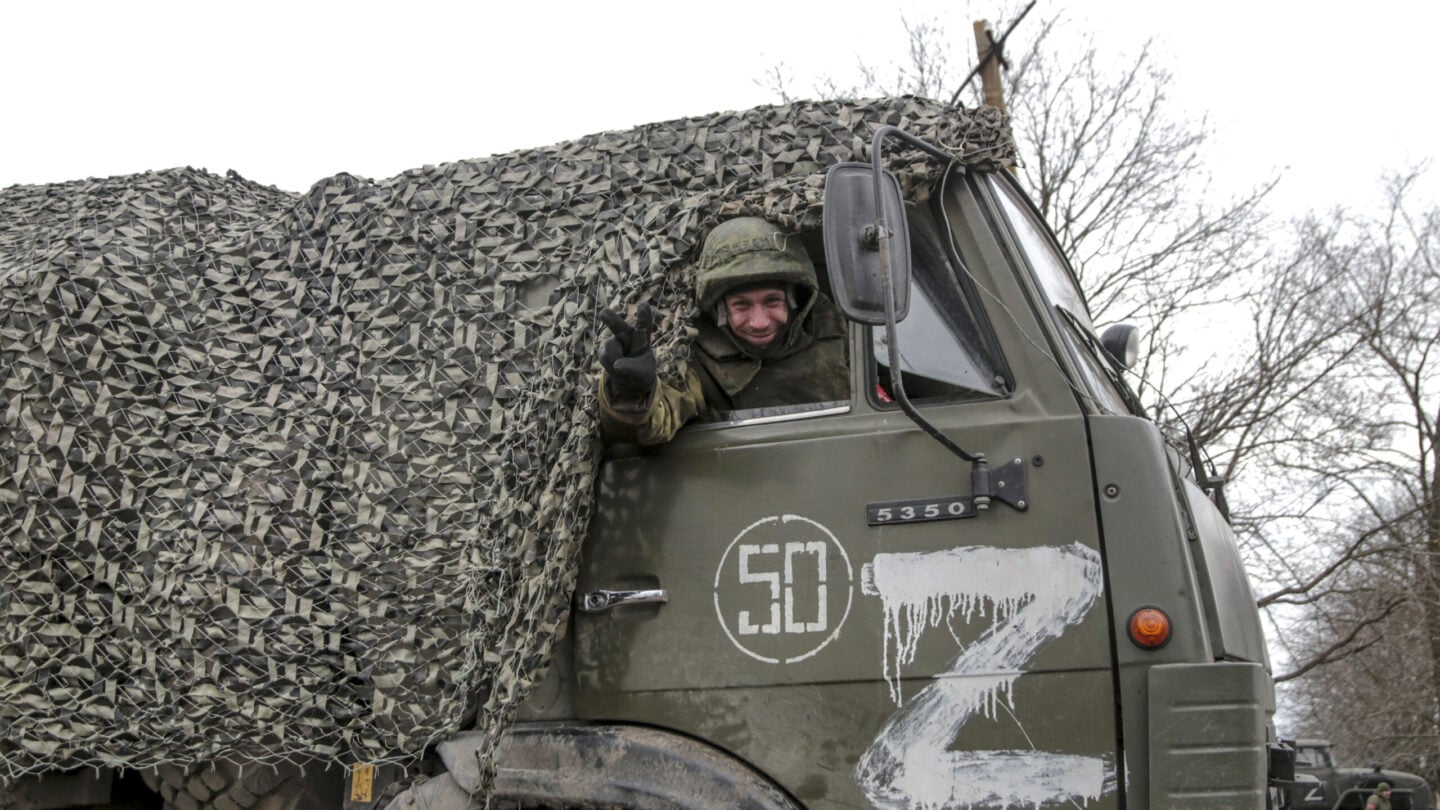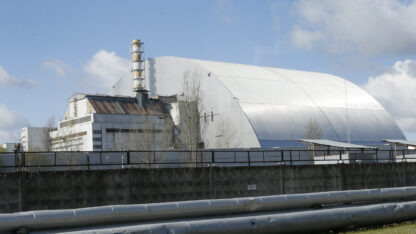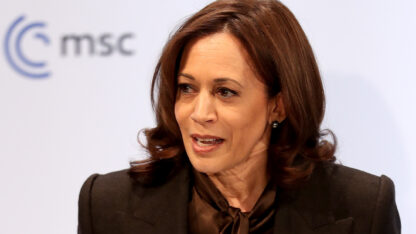Messages featuring the letter “Z” have spread widely across social media since Russia’s invasion of Ukraine. Billboards have recently popped up in Russian cities featuring the letter. Stickers have appeared on cars and commercial vehicles. Russia’s state-owned RT is currently selling T-shirts on its website in apparent support of the ongoing conflict.
But the origins of the symbol remain a mystery.
Prior to Russia’s invasion of Ukraine, the letter “Z” was seen painted on tanks as well as other military vehicles massing near the border. With both countries using similar tanks and trucks, it was originally thought this was meant to distinguish different units to help prevent friendly fire and assist with mobilization.
Some speculate that the “Z” could stand for “zapad,” which means west in Russian. Some have snidely suggested that the symbol stands for other words such as “zhopa,” meaning ass in a reference to stiff Ukrainian resistance. The letter does not appear in the Cyrillic alphabet used by both Russia and Ukraine.
The Instagram account of the Russian Ministry of Defense has featured both “Z” and “‘V” symbols with messages of “to victory” and “we finish wars.” Another message states “we are responsible for the world/peace.” The black-and-orange ribbons that make up the “Z” are St. George’s ribbons, which are symbols of remembrance of Russians who died during World War II similar to the U.K.’s usage of the poppy for the fallen during World War I. Russia has repeatedly framed its invasion of Ukraine as defending its people from neo-Nazis although Ukraine President Volodymyr Zelenskyy is Jewish.
It’s not uncommon for military vehicles to feature markings to help both soldiers and their commanders organize during the chaos of combat — one of the most famous markings being that of the red cross or red crescent to discern medical vehicles.
Regardless of its original military meaning, “Z” has become a symbol for support of Russia’s ongoing war in Ukraine both at home and abroad.
Russian gymnast Ivan Kuliak is facing disciplinary action by the International Gymnastics Federation (FIG) after taping the symbol to his uniform in place of the banned Russian flag at a gymnastics World Cup event in Qatar. Kuliak was standing next to Ukrainian Illia Kovtun. The FIG has since banned both Russian and Belarusians athletes from competing in its events.
A widely spread image shows patients and staff of a children’s hospice forming the symbol in a snow-covered courtyard in Kazan, the capital and largest city of Tatarstan a semi-autonomous republic in Russia.
A video with over a million views has spread online showing people waving the Russian flag behind a group wearing hoodies bearing the symbol.
“The task of our troops now is to tighten the noose around the neck of fascism. To finally end the 8-year war of terror in Donbas,” a man in the video says. “Get to work, brothers! For Russia. For the president. FOR RUSSIA FOR PUTIN!’
It’s still unclear if the recent swell of support is a coordinated attempt by the Russian government to coalesce the country behind its war-fighting efforts or an organic expression of public backing.
Russia is currently facing some of the harshest sanctions levied against a country in modern history, with President Putin equating the financial penalties to a declaration of war.
The symbol has also reportedly been painted on the doors of prominent Russians such as film critic Anton Dolin as well as Pussy Riot member Rita Flores in an apparent attempt at intimidation.
Whether “Z” will continue to represent the conflict is still unknown. But for now, the symbol has become a visual representation of Russia’s war in Ukraine.
Copyright 2022 NPR. To see more, visit https://www.npr.org.
9(MDAxODM0MDY4MDEyMTY4NDA3MzI3YjkzMw004))

9(MDAxODM0MDY4MDEyMTY4NDA3MzI3YjkzMw004))








